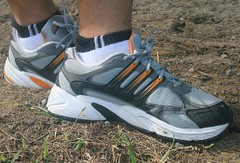WHAT ARE CELLS?
Cells are the basic units of all living organisms (just like bricks are to buildings). Cells cannot be seen by using your naked eyes. So in order to see cells clearly, you need to use a light microscope. A very good light microscope can magnify about 1500 times and can show all the structures as shown in the following figures:
Cells are the basic units of all living organisms (just like bricks are to buildings). Cells cannot be seen by using your naked eyes. So in order to see cells clearly, you need to use a light microscope. A very good light microscope can magnify about 1500 times and can show all the structures as shown in the following figures:
The following figure shows a typical animal cell
The following figure shows a typical plant cell
- Both have a cell membrane (plasma membrane) surrounding the cell.
- Both have cytoplasm.
- Both have a nucleus (one per cell).
- Both contain mitochondria (note: mitochondrion, if singular).
B. DIFFERENCES:
- A plant cell has a cellulose cell wall outside the cell membrane but an animal cell has no cell wall.
- Most plant cells have chloroplasts containing chlorophyll in the cytoplasm but animal cells have not chloroplasts.
- Plant cells have a very large vacuole containing cell sap (some plant cells have two large vacuoles) but animal cells have non-permanent small vacuoles (meaning, even if they are present, they are usually very small in size and temporary in nature).
- Plant cells are usually larger in size compared to animal cells.
- Plant cells are usually regular in shape (due to the presence of cell wall) but animal cells are usually irregular in shape (due to the absence of cell wall).
- Plant cells often have starch granules (starch granules store some of the food made during photosynthesis) but starch granules are absent in animal cells (some animal cells have glycogen granules instead).
FUNCTIONS OF CELL PARTS:
- Nucleus: It controls the activities of the cells. It contains genetic materials in the form of chromosomes.
- Cytoplasm: It is a jelly-like substance in which other cell parts (organelles) are found and it is also a site where most chemical reactions take place.
- Cell membrane: It is selectively permeable made of a very thin layer of protein and fat. Hence it controls the passage of materials in and out of the cell. Selectively permeable means that it can allow smaller molecules like water molecules to pass through but cannot allow larger molecules like starch molecules to pass through.
- Cell wall: It is made of cellulose which is a kind of carbohydrate which makes the cell wall tough hence maintains the shape of plant cells. It is fully permeable (meaning, large and small molecules can pass through it).
- Mitochondrion: It is a site for respiration where energy from food (glucose) is released.
- Chloroplast: It is a site for photosynthesis. It contains a green pigment, chlorophyll which absorbs energy from sunlight.
- Vacuole: It is a space in a cell (surrounded by a membrane called tonoplast) containing a solution of sugars and other substances (cell sap).



